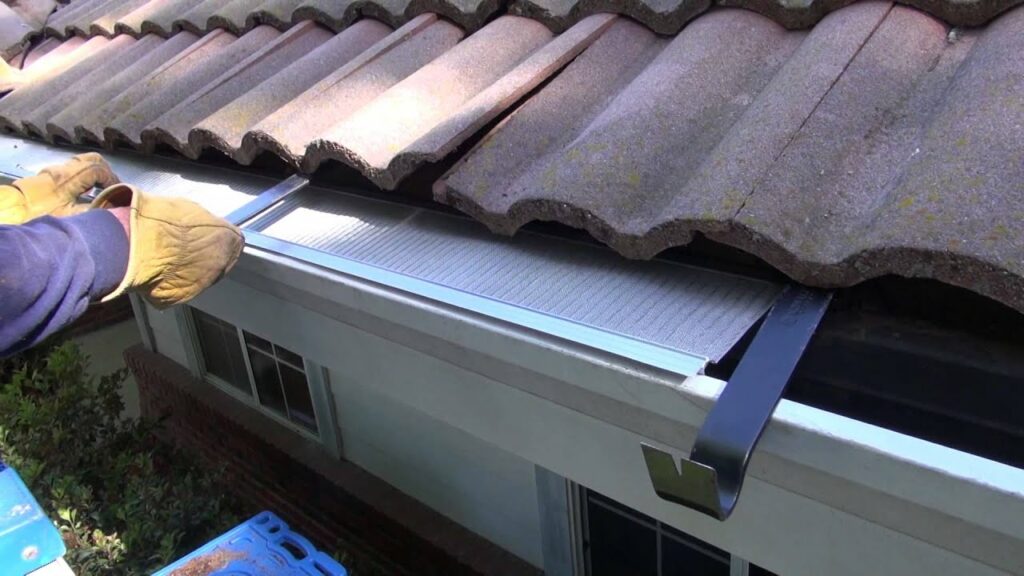Rain gutters are an essential part of any home, directing rainwater away from the roof and preventing damage to your property. Installing gutters can be a straightforward process with the right tools, materials, and knowledge. In this detailed guide, we’ll walk you through the steps to successfully how to install rain gutters on your home, helping protect your foundation, landscaping, and more.
Table of Contents
Why Installing Gutters Is Important
Before diving into the installation process, it’s crucial to understand why gutters are so important. Gutters catch rainwater that falls on the roof and channel it to downspouts, directing the water safely away from the building. Without gutters, rainwater can flow down the sides of your house, causing foundation damage, erosion, flooding in your basement, or even damaging your home’s siding.

Gutters also prevent landscape erosion and protect walkways and driveways from becoming flooded during heavy rains. Properly installed rain gutters can save you time and money in repairs down the road.
What You’ll Need
Make sure you have all the required materials and tools ready before starting the project. Here’s a quick list:
Materials:
- Gutter sections
- Gutter elbows
- Downspouts
- Gutter hangers
- End caps
- Gutter sealant
- Screws
- Gutter miters (if corners are required)
- Flashing (optional for additional protection)
Tools:
- Measuring tape
- Power drill
- Hacksaw or mitre saw
- Ladder
- Safety glasses and gloves
- Caulking gun
- Level
- Chalk line or laser level
- Screwdriver
Step 1: Plan and Measure the Gutters
Before you start installing, planning the layout of your gutters is crucial for a seamless installation process.
Measure Your Roofline:
Start by measuring the total length of the roofline where you intend to install the gutters. Measure both the front and back sides of your home. The average gutter section is around 10 feet long, so you will need to plan how many sections you’ll need to cover the entire roofline.
Determine the Gutter Pitch:
Gutters need to have a slight slope to ensure water flows toward the downspouts. A slope of about ¼ inch for every 10 feet of gutter length is ideal. This ensures that water doesn’t pool in the gutters but instead flows properly toward the downspout.
Step 2: Prepare the Gutter Sections
If your gutters aren’t pre-assembled, you’ll need to cut them to the proper length. Use a hacksaw or mitre saw to make precise cuts for your gutter sections. Don’t forget to wear safety glasses and gloves when using power tools. Once you’ve made the cuts, use a file to smooth out any jagged edges.
Assemble the Gutter Sections:
Connect the gutter sections with the appropriate connectors. Use gutter sealant to ensure the seams are watertight. This will prevent leaks and help keep your gutters functioning properly for years to come.
Step 3: Install Gutter Hangers
To hold the gutters securely in place, you’ll need to install gutter hangers. Gutter hangers attach to the fascia board and support the weight of the gutter while allowing for the necessary pitch.
Position the Hangers:
Start by placing your first gutter hanger at one end of the gutter section. The distance between the hangers should be roughly 24 inches apart, although this may vary depending on your gutter system and the materials used.
Attach the Hangers:
Once you’ve positioned the hangers, secure them to the fascia with screws or nails, depending on the type of hangers you are using. Make sure the hangers are level, as this will help your gutters maintain the correct pitch for water flow.
Step 4: Attach the Gutters
Now that your hangers are securely in place, it’s time to attach the gutters to the fascia board.
Align the Gutters:
Place the gutter section into the hangers, ensuring it is positioned correctly along the roofline. Check the level of the gutter to make sure it has the right pitch. If it looks off, adjust the gutter by raising or lowering the hanger until the slope is perfect.
Secure the Gutters:
Once aligned, use screws to secure the gutter to each hanger. Be sure not to overtighten the screws, as this can cause damage to the gutter material. Secure the end of each gutter section using end caps, which prevent water from leaking out at the joints.
Step 5: Install Downspouts
The next step is to install downspouts, which carry the rainwater from the gutters down to the ground and away from the foundation. Plan the placement of your downspouts before installing them.
Measure and Cut the Downspouts:
Using a measuring tape, determine the length of the downspout you need. Make sure the downspouts are long enough to direct the water far away from the house, typically at least 3 feet from the foundation.
Install Elbows and Downspouts:
Start by attaching the elbow at the bottom of the gutter section, pointing it toward the desired location. Then, attach the downspout, securing it with screws to both the gutter and the ground. You may need to use a few more elbows to guide the water flow in the right direction.
Step 6: Seal the Gutter Joints
Once all the sections and downspouts are in place, it’s time to seal the joints. Use a high-quality caulk or gutter sealant to seal any seams or joints. This will help prevent leaks and ensure that water flows correctly through the gutters and downspouts.
Step 7: Test the System
Before finishing up, it’s essential to test your gutter system to make sure it works properly.
Check the Pitch:
Use a level to confirm that the gutters have the correct slope. Water should flow freely toward the downspouts without pooling in the gutters.
Test with Water:
After confirming the pitch, pour water into the gutters using a hose. Check for leaks, and verify that the water is flowing towards the downspouts without any obstruction.
Step 8: Maintain Your Gutters
Installing gutters is just the first step in protecting your home. Regular maintenance is essential to keep your gutters functioning effectively.
Clean Gutters Regularly:
Leaves, twigs, and other debris can accumulate in gutters, causing clogs that prevent water from flowing freely. Clean your gutters at least twice a year, preferably in the spring and fall. If you live in a region with many trees, you may need to clean your gutters more often.
Inspect for Damage:
Periodically check your gutters for signs of damage, such as rust, cracks, or sagging. Promptly repair any issues to prevent costly damage to your home.
Consider Gutter Guards:
If you want to reduce the amount of maintenance required, consider installing gutter guards. These devices keep debris out of the gutters while allowing water to flow through.
Conclusion
This blog about how to install rain gutters is a practical DIY that can help protect your home from water damage and foundation issues. By following these simple steps, you can ensure that your gutters are installed correctly and efficiently, providing years of protection for your home. Regular maintenance is key to keeping your system functioning well, so be sure to clean and inspect your gutters often.
For better installation of rain or roofing gutters can be done by professionals. If you need a roofing experts feel free to ask anything.
With the right tools, a bit of patience, and careful planning, you can successfully install gutters that will keep your home safe from the elements.
Explore More : Top 5 Trends in Kitchen Remodeling for 2025

Walter Houle
Welcome to my blog! I am a seasoned content writer with over 10 years of experience crafting engaging and informative content across various industries. Currently, I am collaborating with OTZ Renovation to create blogs that inspire and guide readers on their home improvement journeys. In this series, I’ll share practical tips, design ideas, and industry insights to help you turn your renovation dreams into reality. Whether you’re planning a complete makeover or looking for expert advice, my goal is to provide valuable content that empowers you to make informed decisions for your home
